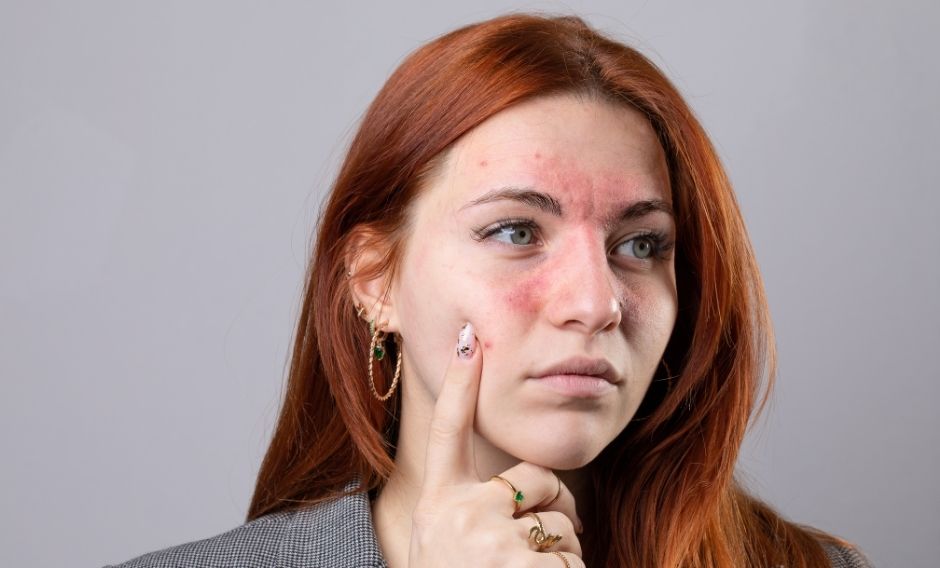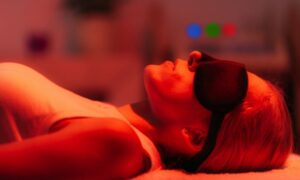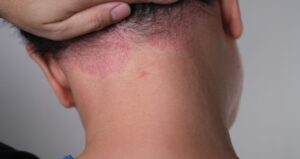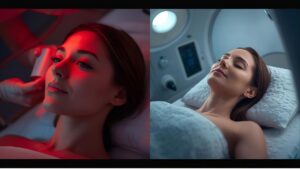If you’ve ever struggled with eczema, you know how frustrating it can be. The constant itchiness, dryness, and flare-ups that appear out of nowhere. It’s enough to make anyone feel like they’re in an endless cycle of creams, prescriptions, and trial-and-error solutions.
Recently, people have started turning to red light therapy for eczema as a safe, non-invasive option that might help calm irritated skin and support long-term skin health. But does it really work? And if so, how can you use it effectively, even at home? Let’s break it down.
What Is Eczema
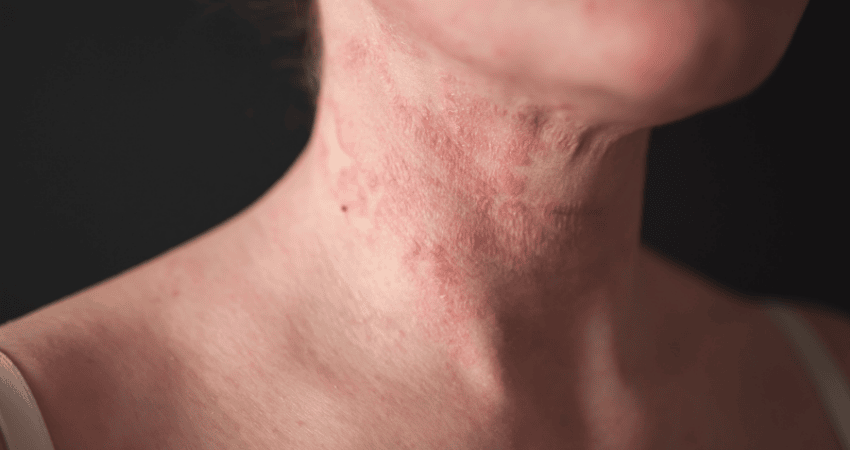
Eczema (or atopic dermatitis) is a chronic skin condition that affects more than 30 million people in the U.S. alone. It shows up as patches of dry, itchy, inflamed skin, often on the hands, elbows, knees, face, or scalp.
While anyone can develop eczema, it often starts in childhood and may persist into adulthood. The tricky part? There’s no single known cause and no permanent cure. Instead, most people focus on managing symptoms and reducing flare-ups.
Types of Eczema You Should Know
Eczema isn’t just one condition. There are actually seven recognized types:
- Atopic dermatitis – the most common form, often linked to allergies.
- Contact dermatitis – triggered by irritants or allergens like soaps, chemicals, or metals.
- Dyshidrotic eczema – causes tiny, itchy blisters on hands and feet.
- Neurodermatitis – thick, scaly patches often triggered by scratching.
- Nummular eczema – circular, coin-shaped patches on the skin.
- Seborrheic dermatitis – usually affects the scalp (dandruff is a mild form).
- Stasis dermatitis – linked to poor circulation, often appearing on the lower legs.
Knowing your type can help you figure out the best management strategies.
Conventional Treatments for Eczema
Traditionally, eczema management includes a mix of approaches:
- Moisturisers and emollients: to strengthen the skin barrier.
- Topical steroids or calcineurin inhibitors: prescribed for inflammation.
- Antihistamines: to reduce itching, especially at night.
- Lifestyle adjustments: like stress reduction, avoiding triggers, and using gentle skincare.
- Phototherapy (UV light therapy): sometimes prescribed for severe cases.
While these can help, they often come with side effects or limited effectiveness, which is why many people are now exploring red light therapy for eczema.
What Is Red Light Therapy
Red light therapy (RLT), also known as photobiomodulation (PBM), is a non-invasive treatment that uses low wavelengths of red and near-infrared light (typically 630–850 nm) to stimulate natural cellular activity. Originally researched by NASA for wound healing in space, it has since been studied for benefits such as skin rejuvenation, pain relief, muscle recovery, and reduced inflammation. Unlike UV light, which can damage the skin, red and near-infrared wavelengths penetrate safely into tissues, making RLT a versatile option for both cosmetic and therapeutic use.
The key lies in its effect on the mitochondria, the energy-producing structures inside our cells. By boosting production of adenosine triphosphate (ATP), RLT helps cells repair themselves more efficiently, reduce inflammation, and accelerate recovery. While red light targets surface layers of the skin to promote collagen and healing, near-infrared light reaches deeper into muscles and joints for broader benefits. Today, RLT is offered in clinics, gyms, wellness centres, and through at-home devices, making it an accessible, drug-free way to support the body’s natural healing and recovery processes.
How Does Red Light Therapy for Eczema Work
So, how can shining light on your skin possibly help eczema? Instead of acting only on the surface like a cream, red light therapy works at a deeper level by influencing how your skin cells function and communicate. Research suggests that specific wavelengths of red and near-infrared light can regulate the inflammatory pathways that are often overactive in eczema while also improving the skin’s ability to retain moisture and repair itself. By calming the immune response and strengthening the skin barrier, red light therapy helps address two of the biggest challenges people with eczema face.
When exposed to red and near-infrared light:
- ATP production increases, giving your skin cells more energy to heal.
- Inflammation decreases, which helps calm redness and itching.
- Collagen production improves, strengthening your skin barrier.
- Blood circulation and oxygen delivery increase, speeding up repair.
- Skin barrier function restores, reducing dryness and flare-up severity.
What Does Research Say
A clinical trial involving 81 participants with atopic dermatitis (the most common form of eczema) reported that 79% of patients experienced a significant reduction in itching following regular red light therapy sessions. Additionally, 70% of participants observed improvements in skin eruptions, with no adverse effects noted. These findings suggest that RLT may be a promising non-invasive treatment option for managing eczema symptoms.
With ongoing use, many users may enjoy fewer flare-ups, faster skin recovery, and reduced reliance on traditional treatments. Red light therapy offers a convenient and effective way to take control of eczema care and support long-term skin wellness, making it an excellent addition to any skin health routine.
Benefits of Red Light Therapy for Eczema
Red light therapy offers a wide range of benefits that go beyond temporary symptom relief, targeting the underlying factors that contribute to eczema. Here’s a closer look at what it can do:
- Reduces itching and inflammation: By calming overactive immune responses in the skin, RLT helps decrease redness, swelling, and the persistent urge to scratch. This can make flare-ups more manageable and reduce the risk of further skin damage caused by scratching.
- Improves moisture retention and dryness: Eczema often results from a compromised skin barrier that struggles to retain moisture. Red light therapy enhances skin cell function and hydration, allowing the skin to stay softer, smoother, and less prone to cracking or scaling.
- Supports skin barrier repair: RLT stimulates collagen and elastin production, reinforcing the skin’s structure and improving its resilience against irritants, allergens, and environmental stressors that often trigger flare-ups.
- Promotes faster healing during flare-ups: By increasing cellular energy production (ATP) and enhancing local blood flow, RLT accelerates the repair of damaged tissue. This means inflamed or irritated areas can recover more quickly, shortening the duration of flare-ups.
- May reduce the need for steroid creams: Consistent use of RLT can help control symptoms naturally, potentially lowering dependence on steroid or anti-inflammatory creams, which can have side effects when used long-term.
- Non-invasive and pain-free: Unlike some medical interventions, RLT is gentle on the skin. Treatments are comfortable, safe, and suitable even for sensitive areas, making it easy to integrate into a regular eczema care routine.
- Safe for regular use: When used as directed, RLT is low-risk and does not involve harsh chemicals, UV exposure, or invasive procedures. Its safety and ease of use make it a practical long-term solution to support skin health alongside moisturisers, topical treatments, and lifestyle management.
How to Use Red Light Therapy for Eczema
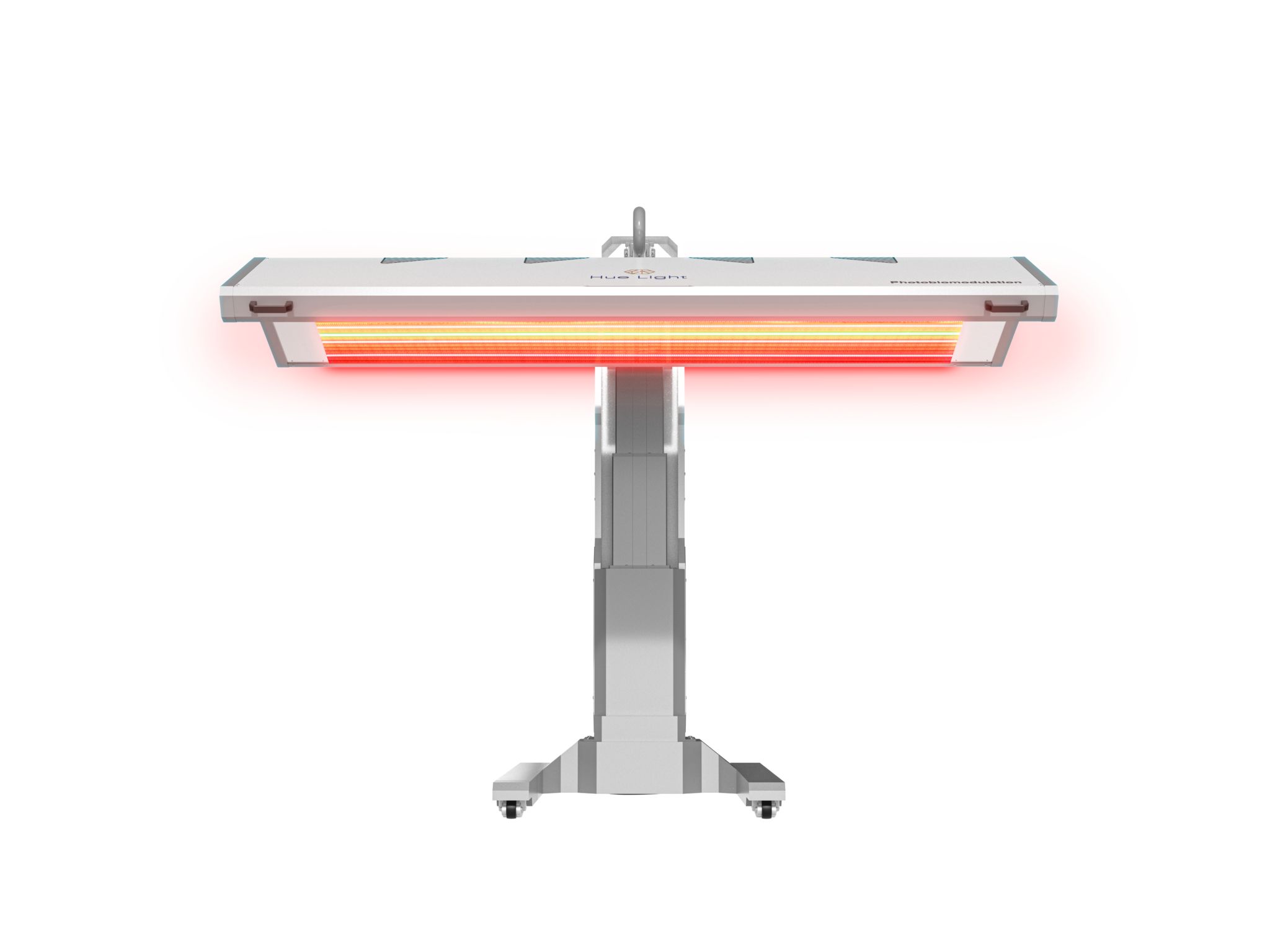 If you’re considering red light therapy for eczema, understanding the correct approach is key to achieving safe and effective results. Proper timing, consistent use, and integrating it with your existing skincare routine can significantly enhance its benefits. The following guide provides evidence-based recommendations to help you get started and make the most of each session.
If you’re considering red light therapy for eczema, understanding the correct approach is key to achieving safe and effective results. Proper timing, consistent use, and integrating it with your existing skincare routine can significantly enhance its benefits. The following guide provides evidence-based recommendations to help you get started and make the most of each session.
- Consistency is key: To see meaningful results, regular use is essential. Most studies suggest 2–3 sessions per week, lasting 10–20 minutes each, over several weeks. Eczema responds gradually to RLT, so sticking to a consistent schedule allows your skin cells to repair, inflammation to subside, and flare-ups to become less frequent over time. Think of it as training your skin to become stronger and healthier with repeated care.
- Distance and exposure: Proper positioning of the device is crucial. Keep the light a few inches from your skin to ensure optimal penetration without discomfort. For larger flare-up areas, full panels can evenly cover the affected regions, while smaller handheld devices are ideal for targeting localized patches such as hands, elbows, or face. Adjusting the distance and duration based on sensitivity can enhance both comfort and effectiveness.
- At-home convenience: RLT can be incorporated seamlessly into your daily routine. While clinics and dermatology offices may offer sessions, having a device at home gives you flexibility to treat flare-ups whenever they occur. This is especially useful for eczema, where timing can make a difference in managing sudden irritation or redness. Home use also reduces the need for frequent appointments, saving time and ensuring more consistent treatment.
- Combine with your routine: Red light therapy works best as part of a comprehensive eczema care plan. It doesn’t replace moisturizers, anti-inflammatory creams, or other prescribed treatments. Instead, it enhances their effects by supporting cellular repair, reducing inflammation, and strengthening the skin barrier. Combining RLT with your regular routine can accelerate healing, maintain skin health, and potentially reduce the need for stronger medications over time.
Are There Any Side Effects
Red light therapy is a gentle and low-risk treatment that most people can use safely. Unlike UV-based therapies, it does not damage your skin or increase the risk of long-term issues like cancer, making it a reassuring option for managing eczema.
Side effects are rare, but some people might notice temporary warmth, slight redness, or mild sensitivity in the treated area, especially if the device is used too frequently. Sticking to the recommended session times and avoiding overexposure helps prevent these minor effects and allows you to enjoy the benefits of red light therapy safely and effectively.
Who Should Avoid Red Light Therapy
Red light therapy is safe for most people, but there are some situations where caution is needed. Individuals with certain medical conditions or treatments should consult a healthcare professional before starting therapy to ensure it is appropriate for them.
You should avoid or get medical clearance if you have epilepsy, are undergoing cancer treatments, or are taking medications that increase light sensitivity. When in doubt, always speak with your doctor to make sure red light therapy is safe for your specific circumstances.
Final Thoughts: Managing Eczema with Red Light Therapy
Living with eczema can feel overwhelming, but you don’t have to rely on harsh medications or endless cycles of trial and error alone.
Red light therapy for eczema is a gentle, non-invasive way to support your skin’s natural healing process. By reducing inflammation, boosting cellular energy, and helping repair your skin barrier, it may become one of your most valuable tools for long-term eczema care.
If you’re ready to try red light therapy for eczema, Hue Light’s Whole Body PBM Wing Panel makes it simple and effective. Designed with high-quality LEDs in the therapeutic range, they give you consistent, reliable exposure right where you need it, whether it’s a small patch or larger areas.
